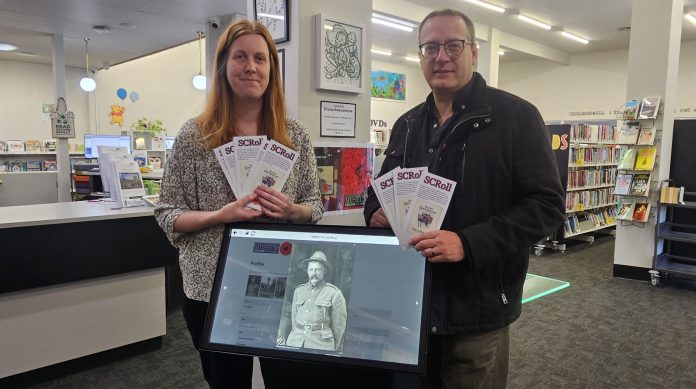
A touch-screen database detailing the memories and stories of almost 6000 South Canterbury soldiers is visiting the Temuka Library, Service & Information Centre.
The SCRoll (South Canterbury Roll of Honour) was created by the South Canterbury Museum team and volunteers and officially released in 2014.
Over the last decade it has continued to grow and is now touring the region.
The roll is an interactive screen loaded with short biographies of South Cantabrians who served their country during World War 1.
Museum documentary history curator and SCRoll project manager Tony Rippin said it was great to be able to have the project accessible in South Canterbury.
‘‘We had extra touch screens that we weren’t using in temporary exhibitions, so I basically re-purposed one to run the scroll so that we could travel it around.
‘‘It travelled a bit before. There was a unit at the Waimate Museum for a couple of years and we’ve travelled it during the WW1 commemorative period, but it’s been a while since it’s been out somewhere else.
‘‘It’s great to be able to have it at the Temuka Library for a couple of weeks. It’s going to go to the Geraldine Museum after that and we have offered it to other museums in the region.’’
The project began with just the names of the men and women who died in the war listed on the local memorials.
‘‘That was just over 1000 men and women, but we soon went on to decide to be more inclusive and include all those who served, since none of them are with us now.
‘‘I’m sure there are still thousands of names we haven’t found, but the beauty of doing it online allows us to be constantly updating it. We can be adding names, correcting anything that turned out to be wrong and filling in gaps across multiple individuals.
‘‘At its peak we had about three dozen volunteers working on it. These days the team is a bit smaller, the public interest has lapsed a bit but we are still getting two or three responses to us a week with requests for information or new little snippets to add.
‘‘I’ve been project managing it the whole time and put a fair bit of work into it, but it wouldn’t have gone anywhere without all those volunteers putting in that work. Some of the volunteers have been ex-military as well. It’s been a delight to work on.’’
There was a wide range of stories in the database, Mr Rippin said.
‘‘A project like this doesn’t come around very often and the amount of support that it had has been a bit unprecedented in my time.
‘‘I’ve just loved the opportunity to be able to help share these stories for families to access and share their stories with the project as well.
‘‘There’s the stories of your soldiers at Gallipoli and on the Western Front, but we’ve also had stories of soldiers with unusual forces like Dunsterforce or with the Imperial Camel Corps.
‘‘There’s men that have gone over and served all the war and come home safely, some that have gone over and barely been on the front, a couple that were killed right before the end of hostilities. So sometimes it’s pretty sad — there’s a lot of tragedy.’’
As well as being available physically the roll can also be accessed online via the South Canterbury Museum website.
The touch screen will remain at the Temuka Library until mid-April before heading to the Geraldine Museum for Anzac Day.




